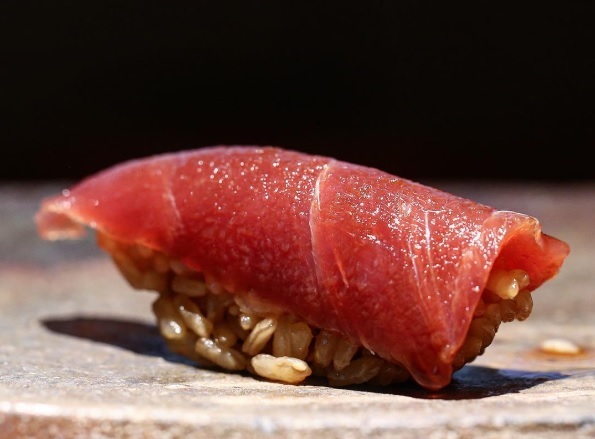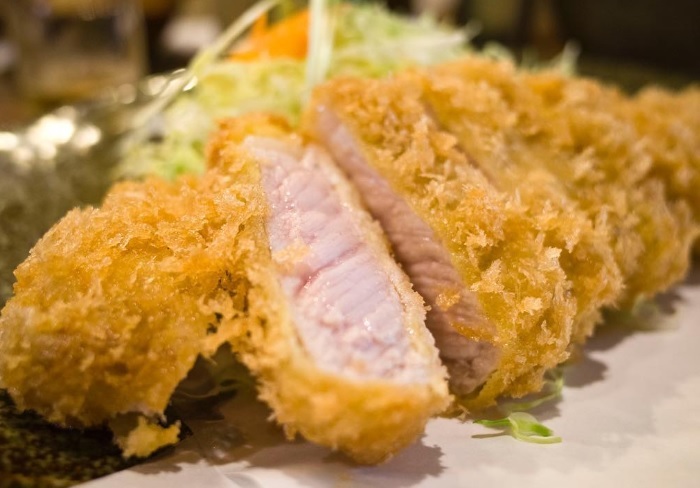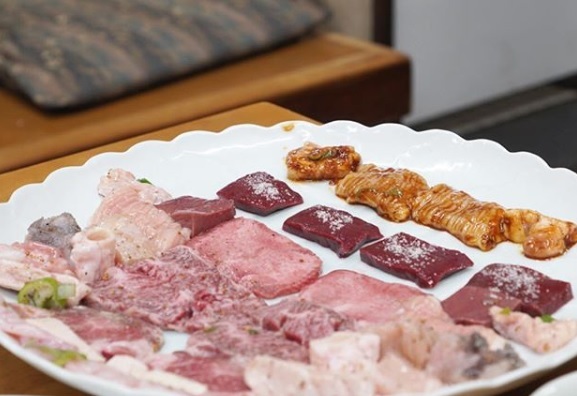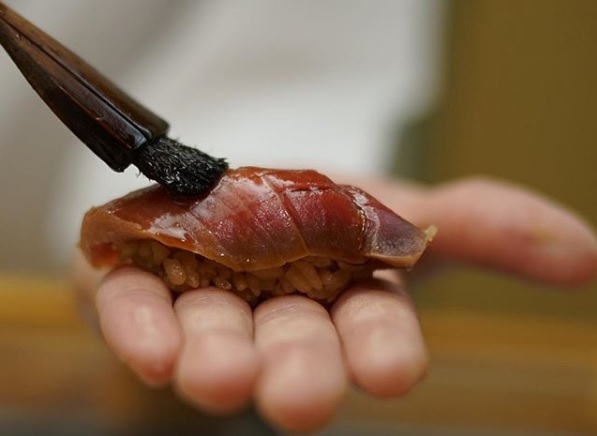Tokiwazushi
Today, few people remember his name, but there was once a sushi chef in Tokyo who was as good as the renowned Jiro Ono. His name was Hachiro Mizutani.
He was trained by the late Suekichi Yoshino at 「Yoshino」 in Kyobashi and studied rigorously at 「Sukiyabashi Jiro」 in Ginza. While working at 「Sukiyabashi Jiro」, he was said to have made sushi side-by-side with the famous Jiro Ono. It is as if the incredible Lionel Messi and Cristiano Ronaldo were playing together on the same soccer team.
This master sushi chef eventually retired in 2016, citing his age as the main reason. And I've heard he now patronizes several sushi restaurants in Ginza as a customer.
Mizutani, unlike Jiro Ono, did not seem to be very active in supporting the younger generation, so, unfortunately, there are not many sushi chefs who are practicing the "Mizutani style" today.
Riku Toda of 「Sushi Ichizu」 in Bangkok and Keita Aoyama of 「Sushi Keita」 are indeed from 「Mizutani」, but they moved to other sushi restaurants after the restaurant closed and now make sushi that is deeply influenced by their new restaurants.
In that sense, the sushi restaurant I will introduce here is the only sushi restaurant today that continues the traditions of the famous「Mizutani」restaurant.
The owner, Yuki Hayashinouchi, is the third generation operating this long-established sushi restaurant that started back in 1952.
Hayashinouchi, who loved watching cooking programs as a child and dreamed of becoming a chef, graduated from a well-known culinary school in Tokyo before working at a kappo restaurant (where the multi-course meal is decided entirely by the chef) for five years and then joining 「Sushi Mizutani」as an apprentice. He trained for seven years under Mizutani, who was famous for his strictness, and learned Mizutani's techniques. Before the restaurant closed, he was sous-chef (second in command) and became responsible for training apprentices, so there was no doubt about his skills.
Hayashinouchi is now the owner and sushi chef at 「Tokiwazushi」which is located about 30 minutes by train from Shinagawa, Tokyo.
After confirming it's time to open, Hayashinouchi stands at the counter and offers a warm "Welcome" greeting. Although his hair is cut short, it’s not shaved like most sushi chefs, and if he were wearing a suit, you could easily mistake him for a businessperson with his refreshing look.
As I was wiping my hands with a warm hand towel, Hayashinouchi asked, "So, what can I do for you today?" I ordered about 12 pieces of sushi as I wanted to fill myself only with sushi since restaurants directly related to the renowned 「Sushi Mizutani」have no need for appetizers.
Although there is a pre-determined menu, he can accommodate a customer's tastes, mood and stomach condition with flexible approaches such as "sushi and 2 - 3 appetizers" or "20 sushi only", showing his skill level is much higher than young people these days.
The tableware used at the counter is not ceramic but traditional black lacquerware. Its beautiful appearance, which reflects the heritage of 「Sukiyabashi Jiro」 and 「Sushi Mizutani」, catches my eyes for a brief moment.
The first piece to arrive is flounder. The thick meat, which is currently in season, is tender and has an elegant aroma that fills my nose with every bite.
The sushi rice is made from hard-cooked rice with a distinct sourness following the original "Jiro style" although it has a less salty taste.
This sleek sushi strikes a perfect balance between fish and rice, so I am convinced that this restaurant is a true master of its craft.
Next, I had the Japanese halfbeak, white sea bream, and ink squid.
This is a classic flow of Edomae-style sushi, starting with mild ingredients and then fatty ingredients, tuna as a centerpiece dish, sashimi, and a simmered dish.
The sweet fatty sea bream is followed by juicy Kasugo sea bream. As you eat it, salt and vinegar create a moderate sweetness, sourness, and umami that covers the inside of your mouth. When I say, "I can taste a refreshing sourness," he replies confidently, "We use 100% orange juice for sourness."
From the looks of it, Hayashinouchi seems sincere and doesn't talk so much, but when I spoke to him, he would chat about various things.
Next was red tuna, medium fatty tuna (chu-toro), straw-smoked mackerel, and fatty tuna (otoro).
The tuna comes from Yunoka, a fish wholesaler that has recently been gaining popularity among young sushi chefs. Hayashinouchi shared that "I introduced 「Sushi Mizukami」 and 「Endo」 myself." His efforts to actively support junior craftsmen as a good big brother reminds me of Aozora Takahashi of 「Harutaka」.
Kohada fish (shad), tiger prawns, sea urchins, and conger eel.
One of the great inventions Jiro Ono brought to Edomae sushi is resetting fatty tuna fat with the sour taste of the Kohada fish. The tiger prawns are slightly smaller in size. Many chefs boast about the size of their prawns, but in my opinion, the smaller prawns are sweeter and have a better texture.
Wow - they were delicious!
Located in the suburbs of Tokyo, it is one of the seven wonders of the sushi world that Hayashinouchi, with skills matching chefs at restaurants that are difficult to reserve, remains largely unknown.
Hayashinouchi's crisp, firm sushi is reminiscent of a sharp Japanese sword.
I was particularly impressed by how he matched the strong sushi rice with such a wide variety of sushi toppings. Everyone knows that sushi rice with a strong vinegar and salt flavor goes well with tuna.
However, there is no reason to think other sushi toppings won't also match well.
I could feel the confidence of a sushi chef who was radiating with "let me show my skills so you don’t worry about details like matching toppings." Hayashinouchi's sushi exudes "refinement" – in appearance, taste, and feeling.
When I am with him, I feel a heightened sense of alertness as if facing a sharp knife.
However, it's never an uncomfortable tension.
It's an unbelievable thrill that never stops.
And although it's slow going, the probability of sushi influencers picking up the name of Yokohama's leading sushi restaurant, 「Tokiwazushi 」, has been increasing recently.
Now is the time to visit.
Tokiwazushi
4-44 Tokiwacho, Naka-ku Yokohama-shi, Kanagawa, 231-0014, Japan
045-681-2065
https://omakase.in/en/r/tj576606
Register account first.
Register










Comments 11
11
Just_Ingest
IG: SushisibzI wanted to ask my hotel concierge to reserve Tokiwa Sushi but they got back to me saying "they only accept local people" haha. What a shame (and kind of a turn off tbh?) I guess there are other Jiro school restaurants to try, though.
Wanderlusting
Sushi was fantastic, Chef was friendly and hospitable. Definitely going back
cshoe
東京在住Tokiwazushi is closing this month and moving to Hirō in March.
guest
I just wanted to thank you for the writeup and recommending the place. I went last night (booked via Omakase, but with my Japanese phone number, otherwise it does not work).
It was a fantastic meal. Both the otsumami and the nigiri were fantastic! So far on this trip I managed to eat at several places and some were just straightforward, nothing mind blowing. Having said that, Sakai in Fukuoka and Kimura here in Tokyo were fantastic and Tokiwa is right there. There was not one nigiri that I found I would have skipped. After I finished I immediately decided that I am coming back - this is clearly that kind of place, at least for me.
localtaste
I’m surprised that the writer knew Riku Toda worked with Mr Mizutani previously. This young chef is talented. He left Ichizu years ago. Now diners can eat his delicious sushi kappo at 四季 (Shiki) in BKK.
Read more